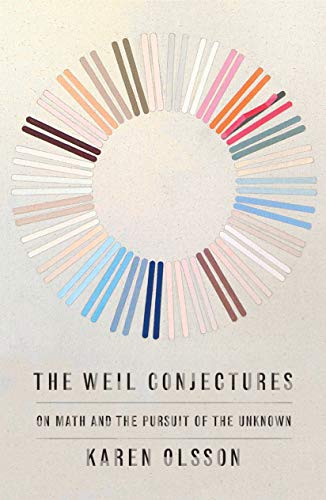David Guaspari in The New Atlantis:
 In The Weil Conjectures Karen Olsson presents her remarkable subjects as creatures from a fairy tale: “Once there were a brother and sister who devoted themselves to the search for truth. A brother who spent his long life solving problems. A sister who died before she could solve the problem of life.” The sister was Simone Weil (pronounced “vay”), a philosopher and political activist who died in 1943 at age thirty-four and gained fame with the posthumous publication of works, assembled from her voluminous notebooks, on society, justice, and the mystical life of faith. Her elder brother André, who lived to ninety-two, was a prodigy who became one of the twentieth century’s preeminent mathematicians.
In The Weil Conjectures Karen Olsson presents her remarkable subjects as creatures from a fairy tale: “Once there were a brother and sister who devoted themselves to the search for truth. A brother who spent his long life solving problems. A sister who died before she could solve the problem of life.” The sister was Simone Weil (pronounced “vay”), a philosopher and political activist who died in 1943 at age thirty-four and gained fame with the posthumous publication of works, assembled from her voluminous notebooks, on society, justice, and the mystical life of faith. Her elder brother André, who lived to ninety-two, was a prodigy who became one of the twentieth century’s preeminent mathematicians.
Their parents were cultured, secular, thoroughly assimilated Parisian Jews. In the words of Francine du Plessix Gray, their mother, Selma, “was a genius factory of sorts, masterminding every move in her children’s intellectual training”: meticulously chosen tutors and lycées, no toys, no dolls, no sweets. An emblematic scene from Olsson of André and Simone: “He teaches her to read, delivers astronomy lectures on the bus. A know-it-all in short pants and a doll of a girl in a sailor dress, her hair in ringlets, egging him on with questions.” They squabble. They compete at memorizing long passages from Corneille and Racine. In their teen years, with several ancient and modern languages under their belts, they like to joke in ancient Greek.
More here.
